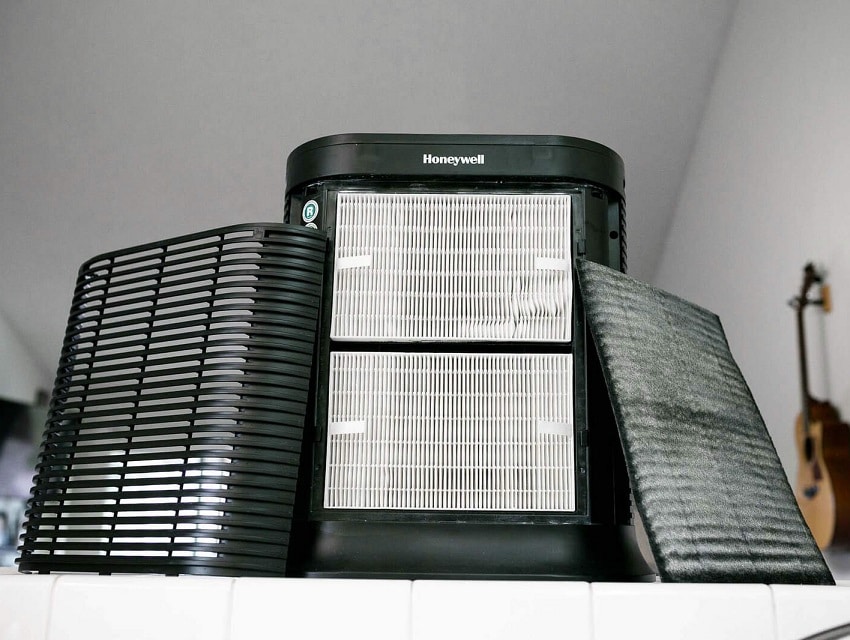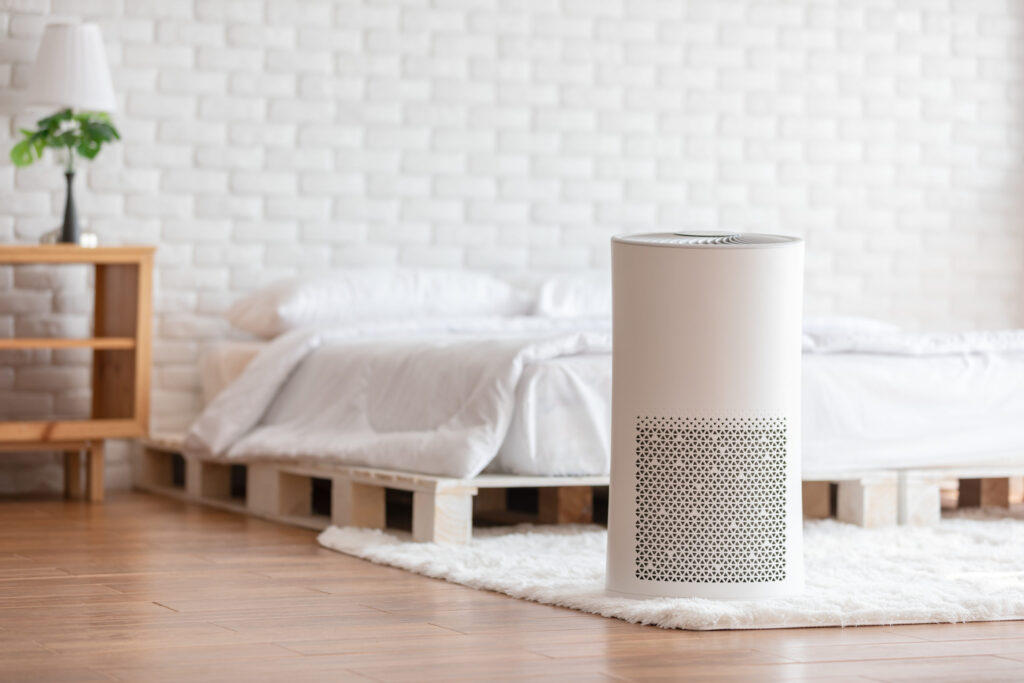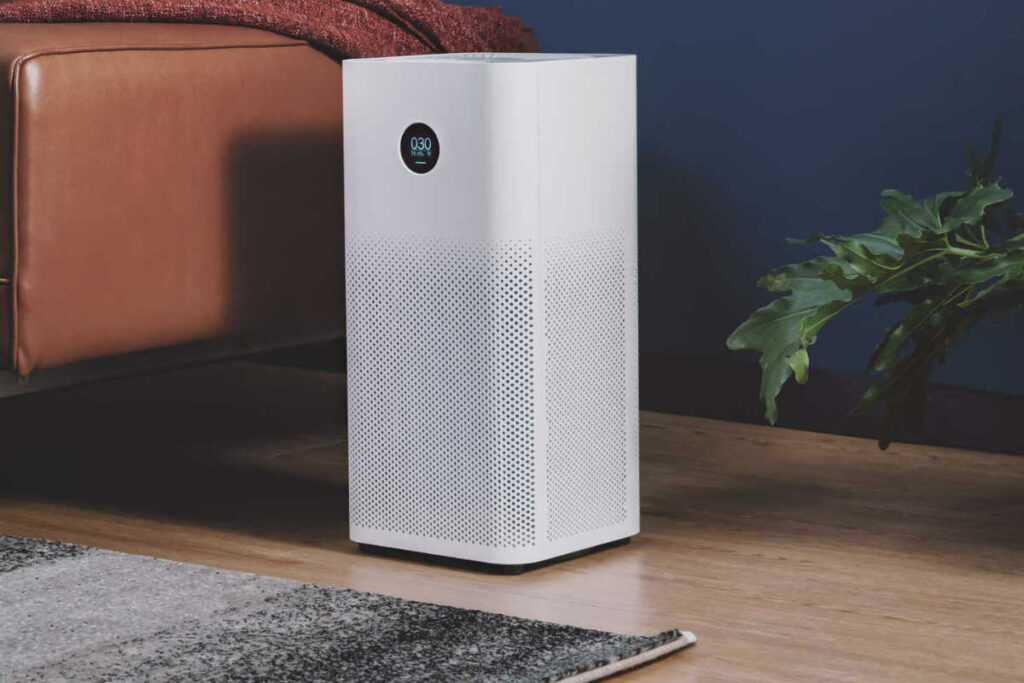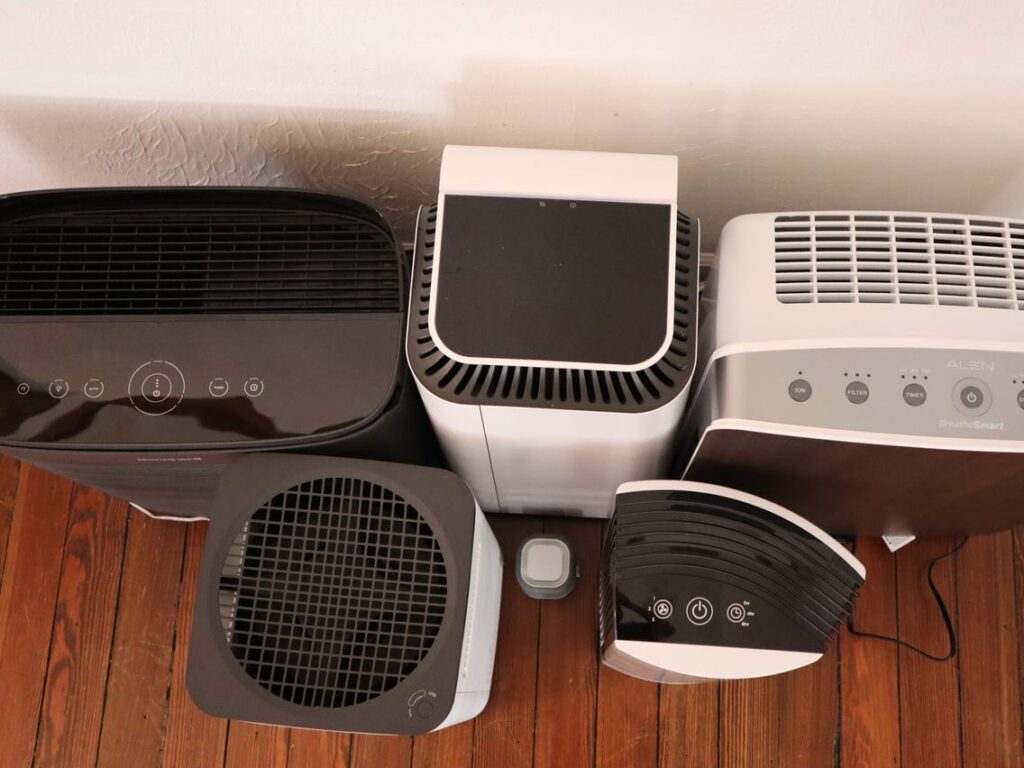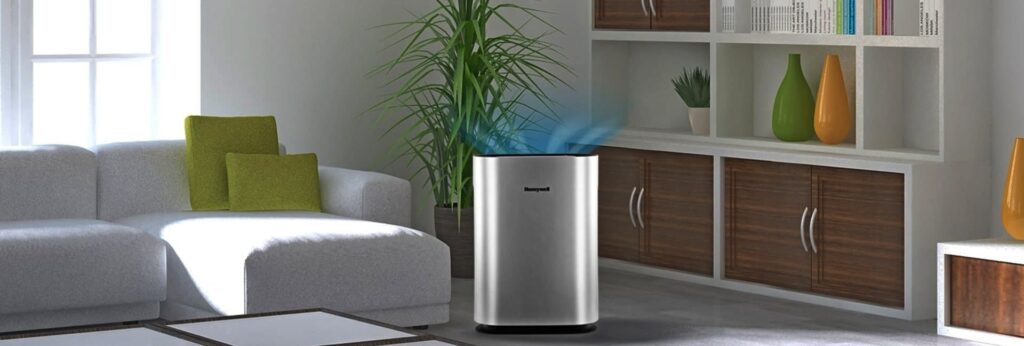There is nothing better than breathing in a lungful of crisp clean air. Did you know that you can have that same feeling inside your own home? It’s as simple as buying an air purification device. Once you have bought it, the next step is figuring out where the place air purifier devices for the best possible outcome.
In this article, we will look at the best placement for your air purifier and how to get the most out of the device. You can also use our helpful tips on what, and what not to do with these appliances.
An air purifier was designed to clean the air that you breathe inside your home. It does this by using special filters that remove impurities from the air. These impurities include foul odors, smoke, dust, mold and pet hair.
These particles can be very dangerous if they are breathed in and can cause health issues for those that suffer from asthma. With a unit like the Coway AP-1512HH these problems can be overcome. This type of quality device features a four-phase HEPA filtration system that is perfect for removing pollutants that cause asthma, and a special pollution sensor that indicates the quality of air in real time.
Indoor air isn’t filtered as easily as the air you breathe outside. Breathing in stale air filled with pollutants can give you a higher risk of developing allergies such as sinusitis and can increase your risk of getting the flu. So it’s clear why clean air should be a priority.
An air purifier works by using a fan that sucks the polluted air towards it. The air enters the machine and is filtered to remove impurities. The clean air is then released back into the room. Since the device takes air in through the front of the device, where you place it will greatly affect its ability to function well.
Many people buy an air purifier and then position it out of sight in a corner or behind the TV. This is the worst thing you can do, as you’re preventing airflow from getting to the unit. The result is that your air can’t be filtered correctly. You can increase the efficiency of the device by 20% by simply placing it in the ideal location.
There are many factors that determine how your air purifier will affect your life. Use the following as your checklist to ensure you get the best value from your investment.

For larger areas that require more coverage, units like the LEVOIT LV-PUR131 make for wise investments. It can clean up to 900ft² of air in an hour and is excellent at eliminating odors thanks to its active carbon filter.
If you have a smaller unit that can only purify 100ft² then it’s best to place it in a smaller area of your home. If the unit can purify 1100ft², then putting it in a small room will limit its function. Yes, you may have very clean air, but you will be wasting your money re-purifying air that has already been cleaned.
An air purifier does an excellent job at removing nasty odors. If you smoke indoors then an air purifier is a must-have to ensure that your furniture and interior don’t take on a smokey smell.
Other areas that might benefit from odor removal include your waste bin, pet bedding, baby room, or bedroom. Bathrooms are notorious for developing mold. An air purifier can help you combat that problem. Just make sure you purchase an air purifier that combats the growth of mold because remember, there are different types.
The height where you place the air purifier also makes a big difference in its overall functionality. As we all know, hot air rises. That means that your air purifier should never be placed on the floor. For best results, it should be placed in the area with the most airflow at least 3 – 5 feet off the ground.
Most new models take the guesswork out of finding the perfect placement for you by having an attachment that allows you to hang it on the wall. This way the unit is exposed to horizontal and vertical airflow which is the best place to put air purifier units.
If you can’t hang your unit, place it in an area where the air flows freely. For optimum results, make sure nothing is blocking the flow of air.
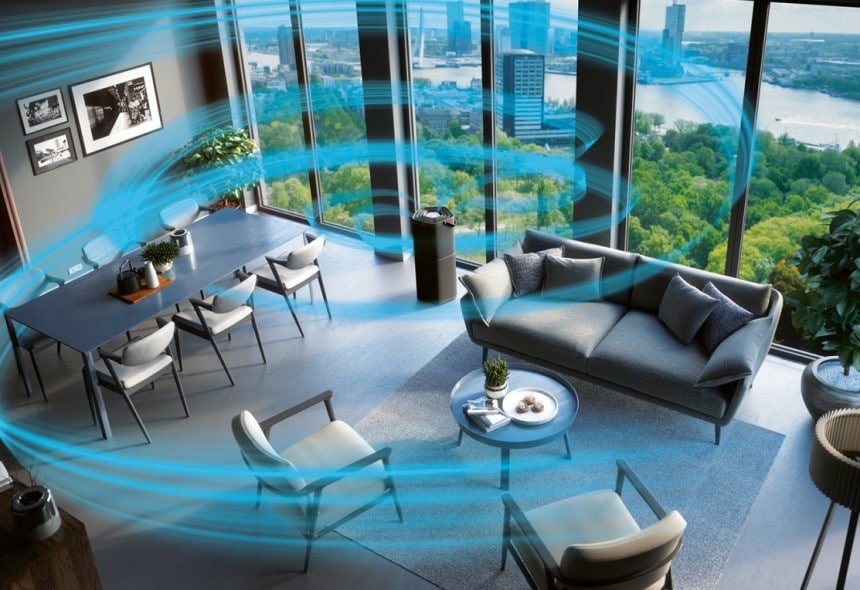
The best placement for air purifier will be where the air flows freely. A strong airflow has the ability to move and lift larger pollutants such as pet hair and dust particles. These are then pulled towards the air purifier and filtered out of the air. This makes the air safer to breathe.
Another perfect placement solution is to use the air purifier to guard your doorways. This provides a line of defense against polluted air before it has a chance to contaminate the rest of your home.
The air purifier needs breathing space in order to operate at its best. Ideally, it should be off the ground and have no obstructions that will affect its ability to draw the air towards the unit.
Other helpful tips include:
Now that you know where to place air purifier in room, let’s look at a few places where placing it definitely won’t work well. It’s not only about the size or type of room, but where you position it in that space.
Humidity makes the air much heavier which makes the air purifier work much harder to get the job done. If you want to use the air humidifier in your kitchen, it’s best to place it away from the stove when cooking and the kettle when it boils. Instead, place it in the entry to the kitchen or near your bin to eliminate smelly odors.
It’s best to use a bathroom spray to get rid of odors in your loo because it’s a very humid spot and will cause your air humidifier a lot of strain trying to purify such humid air. If you insist on using it in the bathroom, it’s best to do so at night when there is less activity. Always switch off the unit when bathing or showering. If the unit is small enough to be moved, remove it from that area completely while the taps are running.
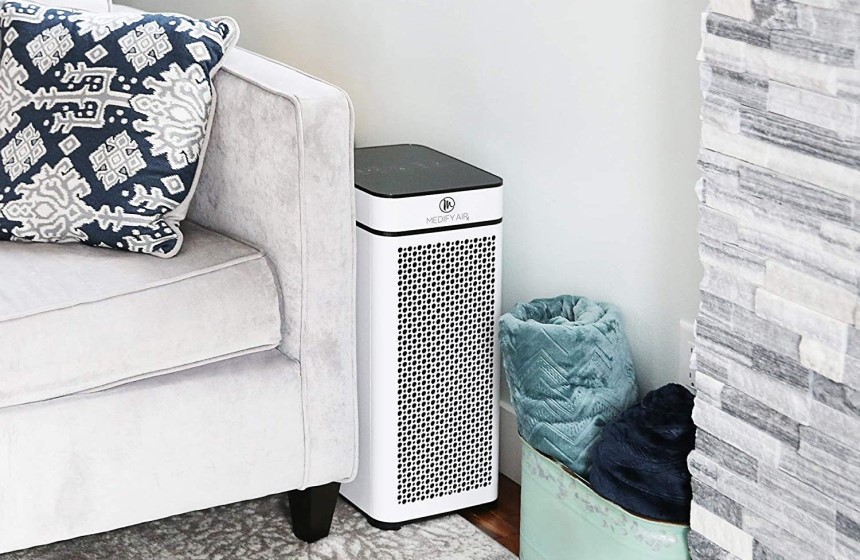
Your air purifier might be vulnerable to electronic interference Trusted Source Electromagnetic interference - Wikipedia Electromagnetic interference (EMI), also called radio-frequency interference (RFI) when in the radio frequency spectrum, is a disturbance generated by an external source that affects an electrical circuit by electromagnetic induction, electrostatic coupling, or conduction. en.wikipedia.org from other devices. It’s best to keep it away from other electronic devices such as your TV or microwave.
Don’t pair with other devices
Your air purifier doesn’t pair well with other devices and works best on its own. Air conditioners and dehumidifiers will change the direction of airflow and compete with your air purification device.
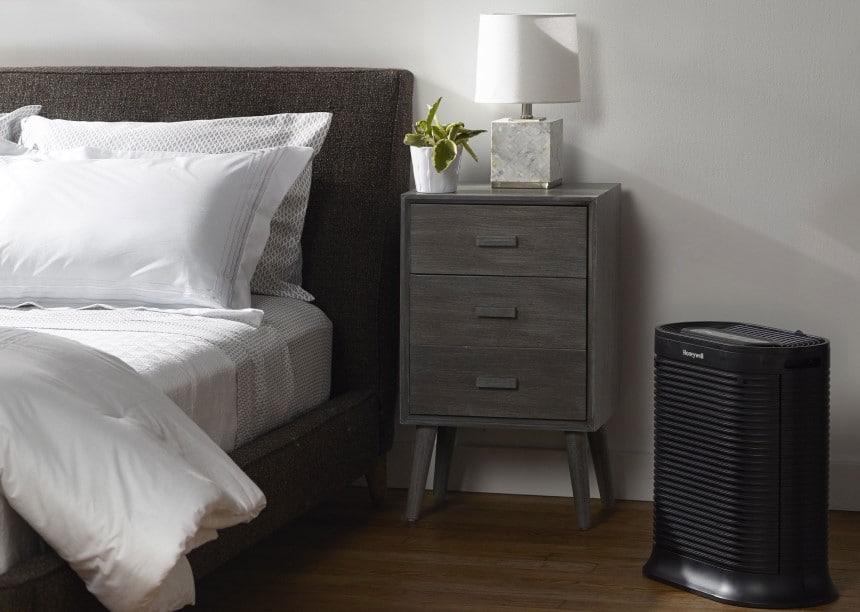
There are many reasons why an air purifier can be a beneficial addition to your home. Following these useful tips should help you get the most out of your purchase. By placing the air purifier in the ideal location, you can reap the benefits such as clean air while not letting your device work harder than it should and get damaged over time.
Following these suggestions on where to place air purifier appliances will ensure the air you breathe is clean and free of any contaminants. It can also give you peace of mind that you’re doing the best for your family and combating allergies before they become a problem.
If you have questions, please leave a comment!
